#DeepSpaceDiscovery
Explore tagged Tumblr posts
Photo





Planet Aquatilis twinkles in the cosmos like a sapphire, its surface swirling with deep blues and vibrant turquoise hues. This aquatic world is distinguished by its extensive coral reefscape, visible even from space as radiant, textured patches that contrast starkly against the darker ocean depths. Aquatilis's atmosphere, rich in oxygen and nitrogen, supports a dynamic weather system, characterized by gentle winds and frequent, misty precipitation that nourishes its expansive marine biosphere. Exploration images reveal a kaleidoscopic underwater realm where the coral formations dominate the landscape, exhibiting a dizzying array of shapes and colors. These structures, ranging from towering spires to delicate fans, teem with diverse aquatic life adapted to the unique environmental pressures and chemical balances of their planet. The coral serves not only as a habitat but also significantly influences the chemical makeup of the planet's oceans, playing a crucial role in CO2 absorption and water quality regulation. Aquatilis, with its vivid, living reefs, provides a stunning example of extraterrestrial marine ecosystems hitherto unparalleled in our celestial observations.
#VibrantCoralReefscape#GalacticAquarium#NeonOceans#DeepSpaceDiscovery#CosmicCoralLife#UnderwaterGalaxy#StellarSeascape#AstronomyArt#CoralReefSpectacular#SpaceScubaDiving
3 notes
·
View notes
Photo
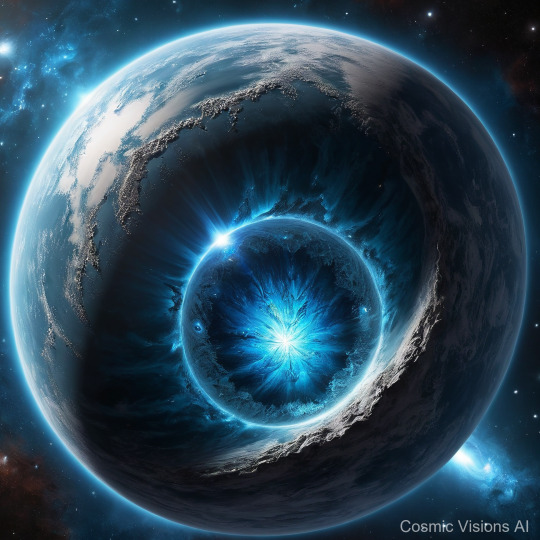
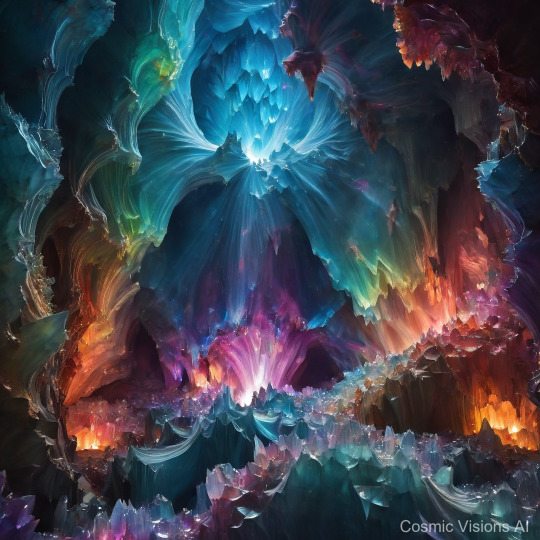
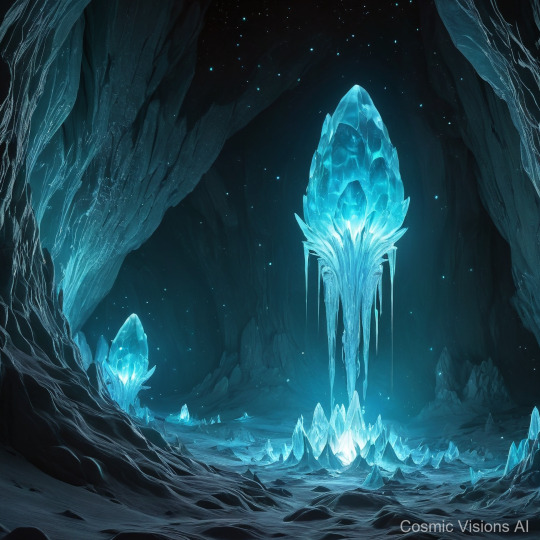
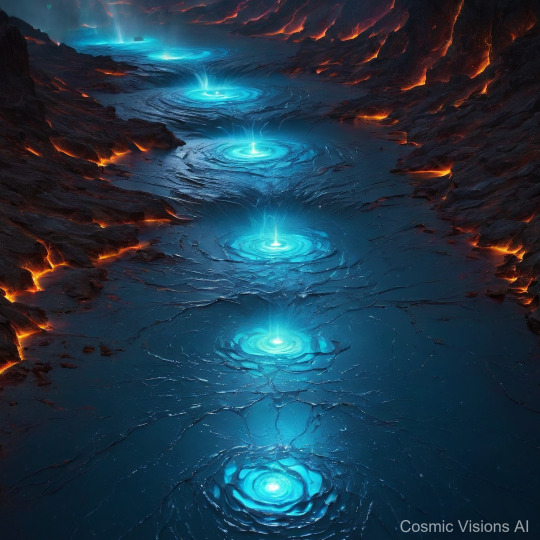
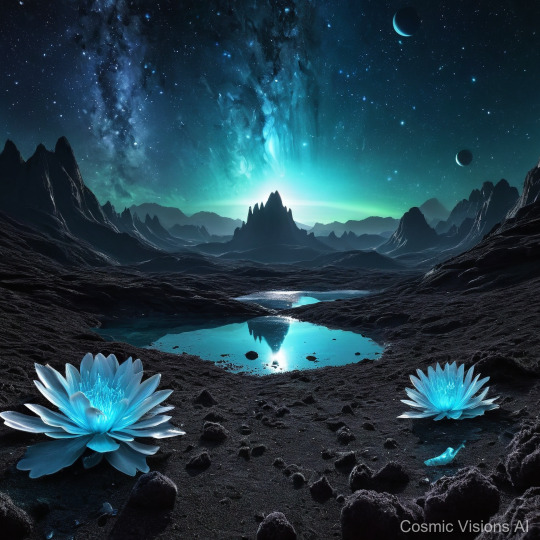
Planet Lumicrista, observed from space, appears as a radiant sapphire orb surrounded by a thin, shimmering atmosphere of pale azure. Its most striking features are the extensive glowing crystal caverns that permeate its rocky crust. Surface explorations reveal that these caverns consist of bioluminescent crystals, primarily in hues of deep purple and electric blue. The luminosity of these formations varies rhythmically, suggestive of an underlying geophysical or possibly biogenic mechanism. Aboveground, the planet is characterized by rugged, wind-swept terrains and a perpetually dim sky, lit mainly by the soft glow emanating from numerous surface fissures leading to the crystalline subterranean network. The atmosphere, though thin, accommodates violent, electrically charged storms that interact spectacularly with the crystal formations, often illuminating them in a dazzling display of natural light shows.
#GlowingCrystalCaverns#SpaceGems#CelestialCaves#CrystalCosmos#StellarGlow#GalacticBeauty#NebulaCrystals#AstronomyArt#SpaceExploration#DeepSpaceDiscovery
0 notes
Photo
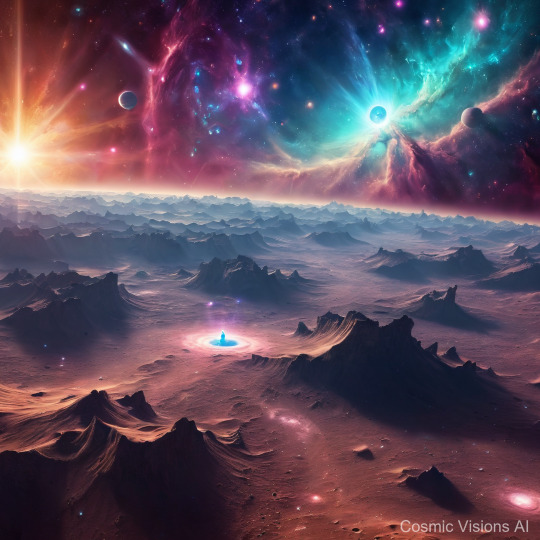
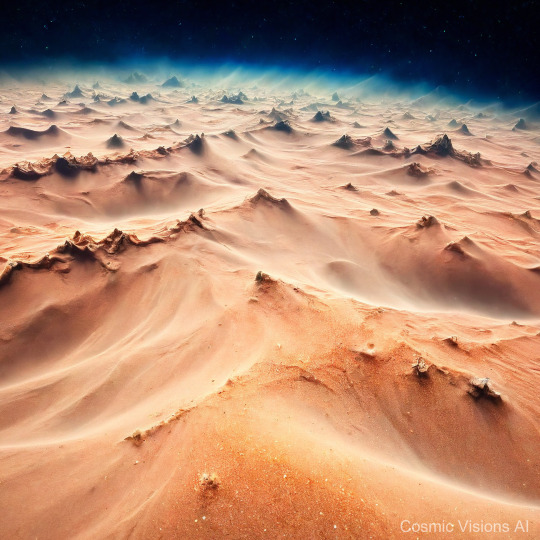

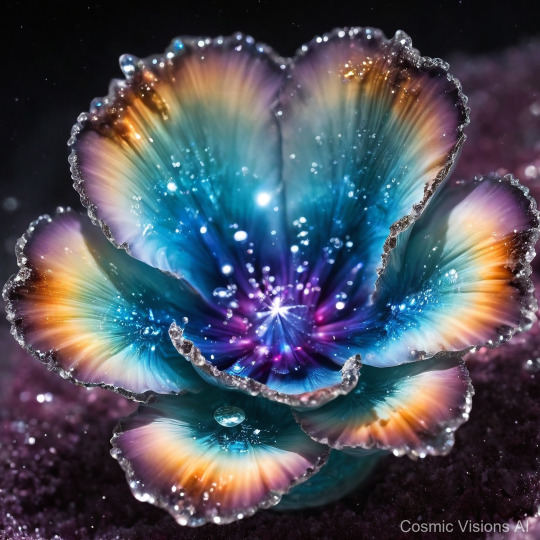
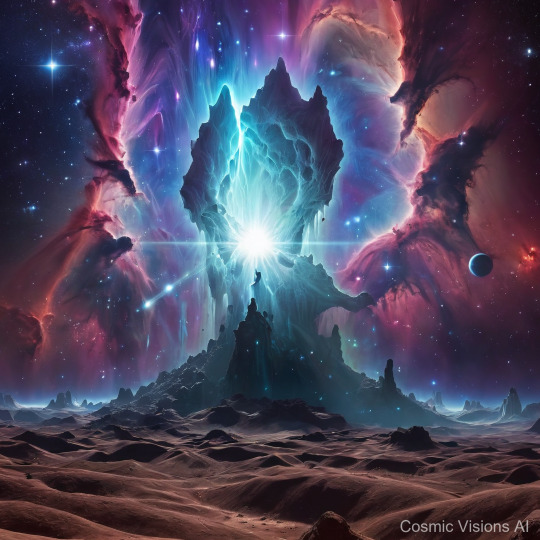
Planet Xytherion, visible from space as a gleaming sphere, exhibits a vivid turquoise hue, with swirling silver mists suggesting a silicate-rich atmosphere. This celestial body is characterized by its vast crystal deserts, which glisten under the radiant glare of its twin suns. Surface exploration reveals these deserts are predominantly composed of amethyst and quartz, forming jagged, translucent formations that stretch for kilometers. The harsh climatic conditions of Xytherion, marked by sudden silicon storms, see these crystals often shrouded in a fine, abrasive dust. This phenomenon not only sculpts but also disperses glittering sand across its sprawling dunes, creating continuously shifting landscapes. Thermal scans indicate extreme temperature fluctuations, ranging from scorching diurnal highs to sub-zero nocturnal lows, challenging the stability of its silicon-based geological structures.
#CrystalDesert#WastelandPhotography#GalacticExploration#AstralLandscape#CelestialBeauties#DeepSpaceDiscovery#CrystalCraters#DesolateAbyss#SpaceScapes#OtherworldlyTerrain
1 note
·
View note
Photo





Planet Glaciena, orbiting a distant, dim star, appears as a shimmering sapphire from space, its atmosphere a thin haze of icy vapors. The surface, predominantly covered in vast expanses of ice, features remarkable crystal ice caverns that dive deep into its crust. These caverns, formed by sublimation processes peculiar to Glaciena’s extreme sub-zero temperatures, refract Glaciena’s weak sunlight into a myriad of iridescent beams, creating stunning light shows within their depths. The temperature, consistently near -200°C, allows the ice to maintain a glass-like clarity, interrupted only by the occasional blizzard that sweeps across the landscape, depositing fine powdery snow that sparkles under weak sunlight. The crystal caverns serve not merely as natural spectacles; their formations have implications for understanding ice dynamics under extreme planetary conditions. Such insights are vital for the broader astrogeological community, documenting a rare, frozen record of cosmic artistry.
#CrystalIceCaverns#SpaceExploration#AstronomyPhotography#GalacticWonders#FrozenBeauty#AstroPhotography#IceFormations#DeepSpaceDiscovery#CelestialVaults#FrozenGalaxy
0 notes
Photo





Planet Glacia-IX, located in the remote Nebulon sector, is striking from space: a vast, azure orb enveloped in swirling white clouds that hint at its tumultuous weather systems. The planet's atmosphere is thin, dominated by icy crystal vapors, which fall as snow over much of its surface. The landscape of Glacia-IX is primarily defined by its expansive Crystal Ice Caverns. These caverns are characterized by their luminescent walls—immense structures of translucent ice, shimmering with embedded crystals that reflect and refract the weak sunlight. Formations vary from delicate, needle-like shards to robust columns several meters tall, creating a labyrinth of mirrored pathways. The temperature within these caverns remains a constant -50°C, a result of the planet's negligible axial tilt limiting seasonal variation. These conditions suggest that the ice has not melted for millennia, preserving the caverns in their breathtaking splendor.
#CrystalIceCaverns#SpaceGems#GalacticBeauty#IceFormations#AstronomyArt#FrozenGalaxy#DeepSpaceDiscovery#CelestialIcicles#StellarIceCaves#CosmicWonder
0 notes